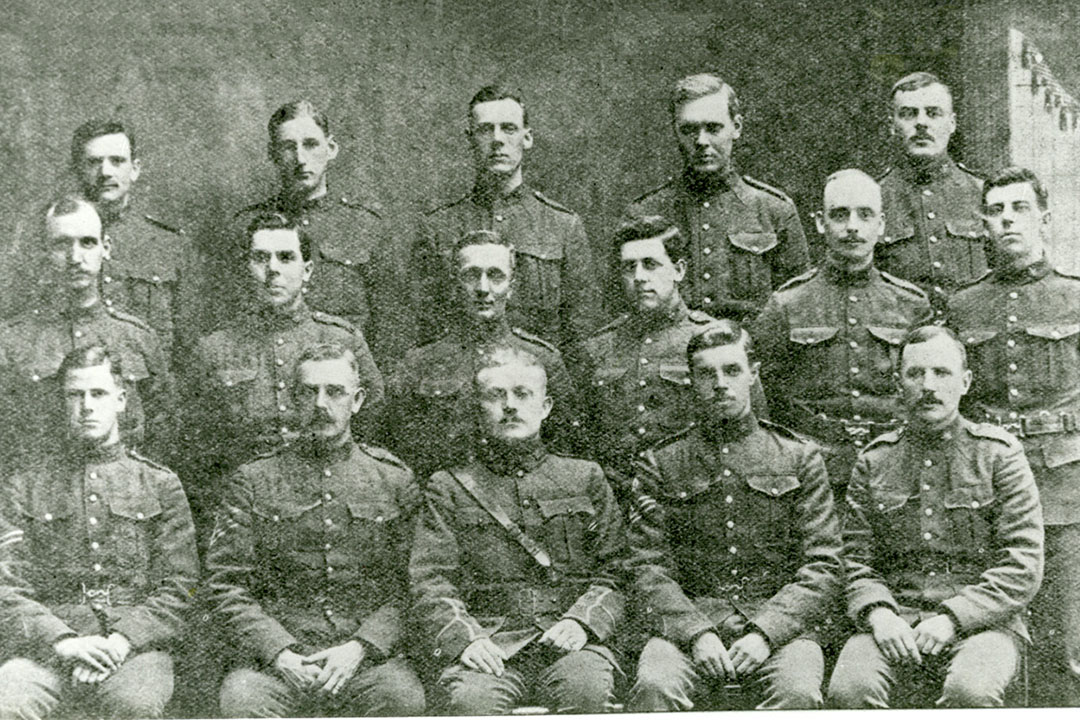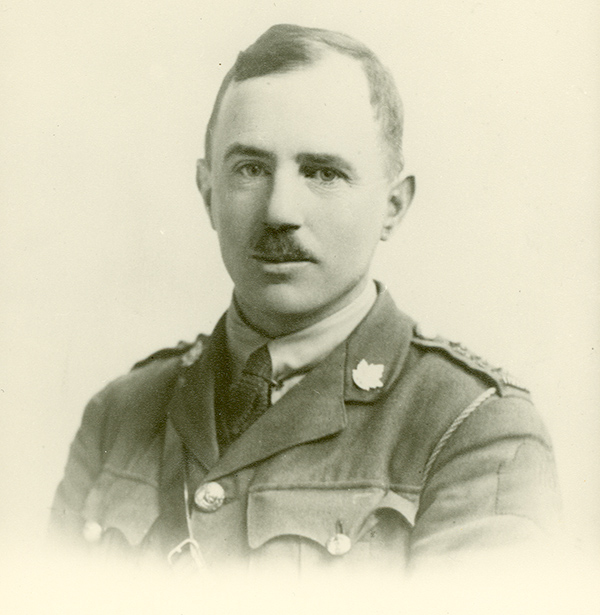
A century of remembrance at the U of S
It’s been 100 years since the end of the First World War, a conflict that altered the course of history and had a profound effect on the University of Saskatchewan.
By James ShewagaA total of 345 students, staff and faculty from the U of S served in the Great War from 1914-1918, with 69 making the ultimate sacrifice, a mortality rate of nearly double that of the Canadian Forces overall. Considering there were only 490 students and faculty on campus at the beginning of the war—just five years after the first university classes were held—the U of S contribution to the war effort was impressive, with the resulting losses devastating.
“The biggest tragedy was the number of people who were killed and wounded,” said Patrick Hayes of University Archives and Special Collections. “The campus was small at the time, so the casualties had a huge effect on the university. And many of those who returned had lost limbs, been gassed or suffered shellshock, so the effects were long-lasting.
“The long-term impact on the university was that a lot of the research that we do now started during the war. The funding for farm research and genetics research that we do today, started back then. So, the university also changed direction research-wise, because of the war.”
Called upon to help feed and fuel the war effort, university research efforts included developing wheat hybrids that were resistant to the wheat rust outbreak of 1916. With so many leaving for the war, the College of Engineering temporarily closed in 1916, with that year also signalling the establishment of the Western University Battalion, which was disbanded overseas and used to reinforce decimated existing units.

Most of the U of S enlistees joined the ill-fated 46th Canadian Battalion, which suffered devastating losses in some of the bloodiest battles of the war, from Vimy Ridge to Passchendaele. As documented in the U of S Great War Commemoration Committee database, 4,917 of the 5,374 members of that Saskatchewan-based battalion were either killed or wounded, a shocking 91 per cent casualty rate.
“Almost everybody in Canadian society lost a relative or someone on their street, and the university was no different,” said Hayes. “The war had a deep and profound impact on the university.”
Leading the charge overseas was the university’s first English professor, Reginald Bateman, a charismatic leader who rose to the rank of major. As documented in the Great War database, Bateman spoke of patriotic duty and the romantic notion of the glory of fighting for King and Country.
“It is comparatively seldom in the world’s history that a man gets a chance to die splendidly,” Bateman said while awaiting his third tour of duty during the war.
Bateman requested a reduction in rank from major to lieutenant to return to the front one more time. He was killed on Sept. 3, 1918, just two months before the end of the war.
“He was very popular and a good officer,” said Hayes. “The university was so tiny at the time and he was the first professor of English, so everyone knew him. He was kind of the star of the campus. He rose through the ranks and chose to go back to the front and was killed in action. So, it was definitely felt on campus.”
Bateman was one of the last university casualties of the war. The deadliest day for the U of S was June 2, 1916 when the Germans launched a fierce assault on the Canadian position at Sanctuary Wood in the Flanders Fields area of Belgium. That day, six U of S students died in the fighting: Henry Egar, Robwwert Carlton Grant, Lawrence Homer, Franklin Mager Keffer, Percy Dennington Kisbey and Joseph Lees Nicholls. Ranging in age from 20 to 25, they had all enlisted at the end of the school year in 1915.
U of S students and faculty also fought at Vimy Ridge, where Captain Edmund Oliver—the first history professor at the U of S—created an impromptu university on the Western Front. The Great War database tells the tale of how Oliver established the “University of Vimy Ridge” in December 1917. Between battles, nearly 4,000 students took part in classes and 6,000 attended lectures, as Oliver led efforts to bring a little hope to the front and help prepare soldiers for returning to society one day.
The end of the war marked the beginning of healing on campus, with the university paying tribute to the 345 who had served—including Claire Rees, who volunteered as a nurse and was the only woman from the U of S to serve overseas. Thirty-three soldiers from the U of S were awarded medals of valour, 69 died, and more than 100 were wounded.
The university painted memorial ribbons in the old College Building (now Peter MacKinnon Building) featuring the names of those who served, constructed the Memorial Gates in 1927—engraved with the names of the 69 who perished—and dedicated a stone monument honouring the 46th Battalion in 1933. A Remembrance Day service has been held every year at the Memorial Gates ever since.
“The First World War was such a traumatic thing and people felt they had to do something to honour those who served,” said Hayes. “And the establishment of the Memorial Gates was the first major fundraising campaign in the history of the university. And the second major fundraising campaign was a memorial as well, and that was the Memorial Union Building.”
While it took years for the university and the returning troops to heal, the U of S played a key role in the transition back to civilian life, with nearly 1,000 veterans graduating following the war.
“The university was affected the same as every part of Canadian society,” said Hayes. “I think the most important part of the First World War is that it changed the world completely. You have a world of empires and kings before it, and then you had the modern world after it.”

